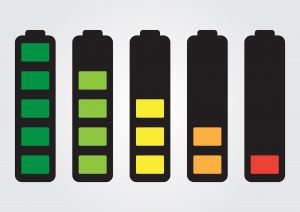 There has always been a sea of confusion when it comes to the manufacturer’s warranty and the battery design life. In some instances, batteries have a design life of a number of years such as 10 or even 5 and these generally bring about a series of concerns. An important one is whether or not the battery actually lasts for the entire design life period as well as if it may need replacing sooner than expected. However, these two mustn’t be confused since they are pretty different.
There has always been a sea of confusion when it comes to the manufacturer’s warranty and the battery design life. In some instances, batteries have a design life of a number of years such as 10 or even 5 and these generally bring about a series of concerns. An important one is whether or not the battery actually lasts for the entire design life period as well as if it may need replacing sooner than expected. However, these two mustn’t be confused since they are pretty different.
When batteries are manufactured, their design life meets various parameters which are required to fall into the Eurobat Classification. Hence, the natural operating conditions are met and your newly purchased battery would last for the duration of the period in which it was intended. However, the service life of your product is highly dependent on the conditions of work that is may be subjected to.
The following are factors from UPS Battery Shop that affect the service life of a battery:
Ambient Temperature
VRLA batteries are severely affected by this particular factor and there are both field and laboratory exercises which indicate the effects. In essence, if your battery is exposed to a 10-degree Celsius rise, its life is down by half. This just simply means that if you have a product that lasts 10 years when subjected to a natural operating temperature of 20 degrees Celsius, if your temperature rises to 30 degrees Celsius, you will only be able to get 5 years of life when constantly used.
However, in the case of temperature fluctuation, the overall life is determined based on the time average of the temperature fluctuation. VRLA batteries are known to experience failure when they do not meet the design specifications suggested by the manufacturer.
Float Charge Ripple
If your battery is constantly experiencing excessive rippling on the DC supply, this significantly reduces the performance and life of your battery. In this case, regulating the voltage across the entire system is needed. However, this is done when your battery is not connected and under steady-state conditions; these are typically +/- 1% to 5% to a 100% load.
Excursions such as transient and others are easily accommodated if your battery isn’t connected while the load is and the regulation limits easily fall within the range of +/- 2.5% of the suggested amount. However, you should always ensure that your flowing current is never reversed for discharging when the battery is subjected to float conditions.
Float Stabilisation Ripple
When your load demands are completely out of phase with your rectifier capabilities and your battery is being used as a stabiliser, this particular ripple form arises. A series of static UPS systems have also been known to behave in this way as a form of shallow cycling. Under these conditions, the natural characteristics don’t apply and your manufacturer should have given a desired set of conditions for optimum use.
Deep Discharge
The low voltage disconnected features should only be used when various equipment is connected. However, due to various safety concerns, the maximum performance typically precludes the lower voltage discharge feature. In some instances, this is necessary for replacing your battery after discharge occurs.
Failed Batteries
If you’ve failed to replace your service battery at the time of discovery, there’s a high possibility that you’re going to put more stress on an entire string of batteries. This just simply means that your string of batteries is possibly receiving either an undercharge or an overcharge from your UPS. The long-term effect of this is definitely a shorter service life.
In conclusion, there are several environmental factors which go beyond both manufacturer and user control. Hence, the degradation rate of your battery, as well as the design life, is simply an indication of how long the battery can actually last. It’s best to keep in mind that you can expect a service life longer than suggested but due to the constant fluctuation, the true life and design life experienced are generally never the same.